Abstract
The pattern of drug self-administration among 15 patients not compliant with their pilocarpine therapy was studied with an electronic medication monitor. Recording the date and the hour every time the medication bottle was opened, the monitor gives detailed information on the medication behaviour. The results indicate different types of medication errors; inadequate spacing of doses during the day with long intervals during the night, frequently missed doses at noon, and long interruptions in the medication, sometimes lasting for several days. Improvement in their compliance was seen in patients who were given instruction and taught to relate their medication to specified events in the day.
Full text
PDF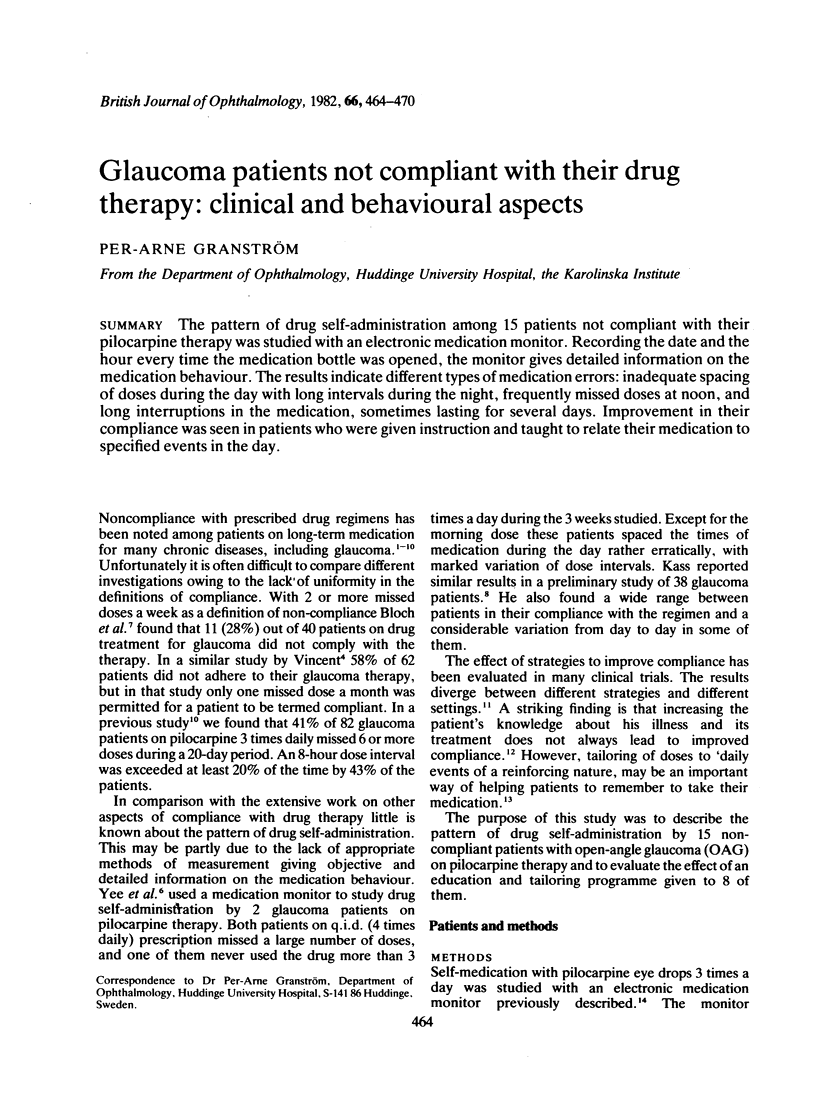
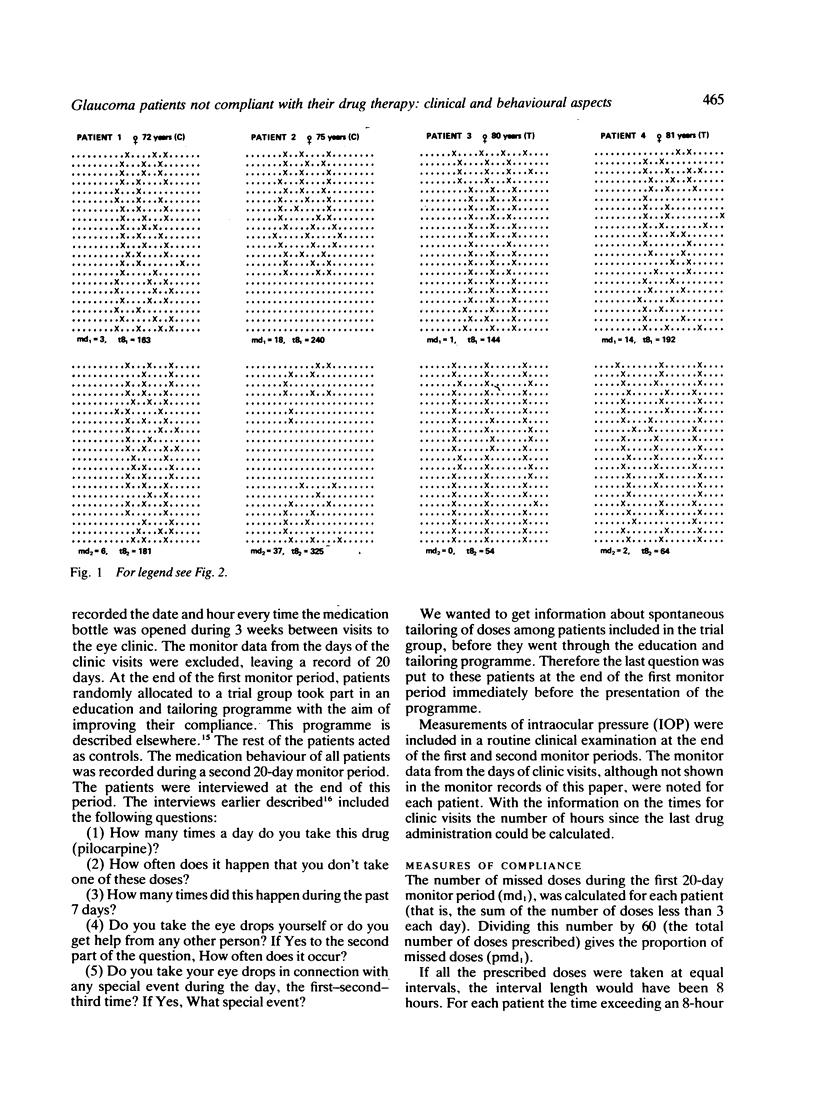
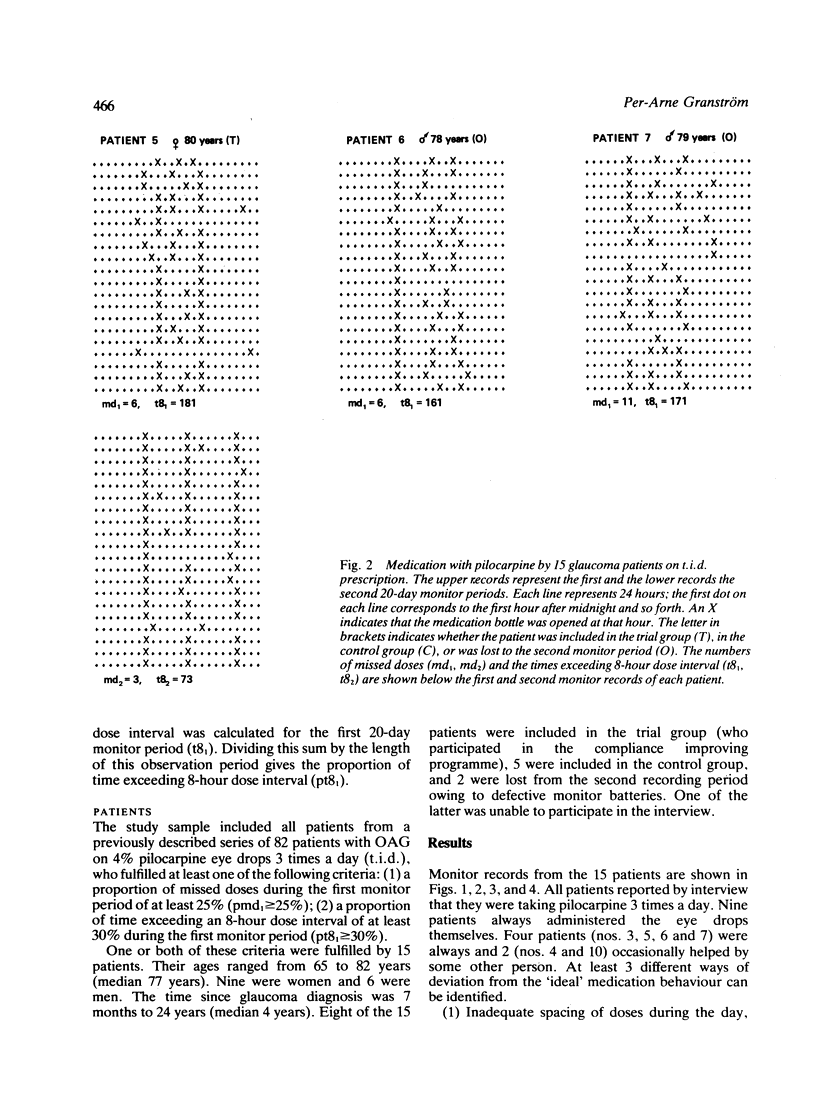
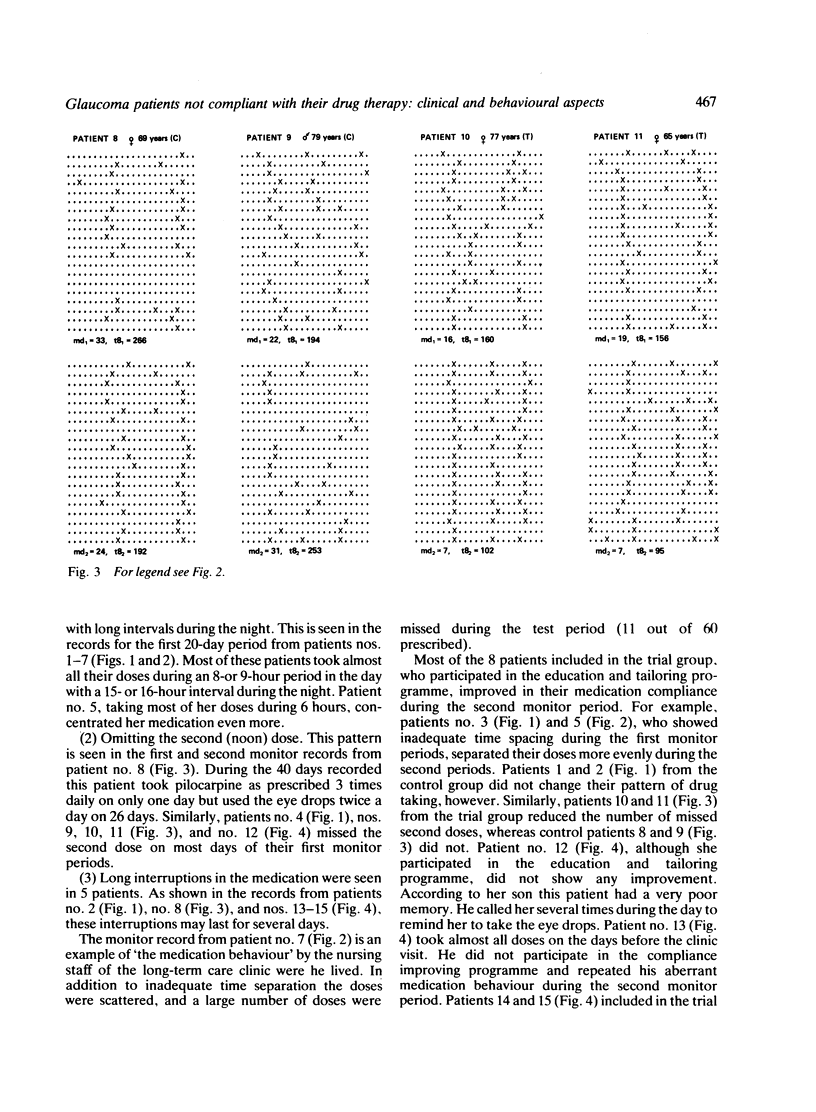
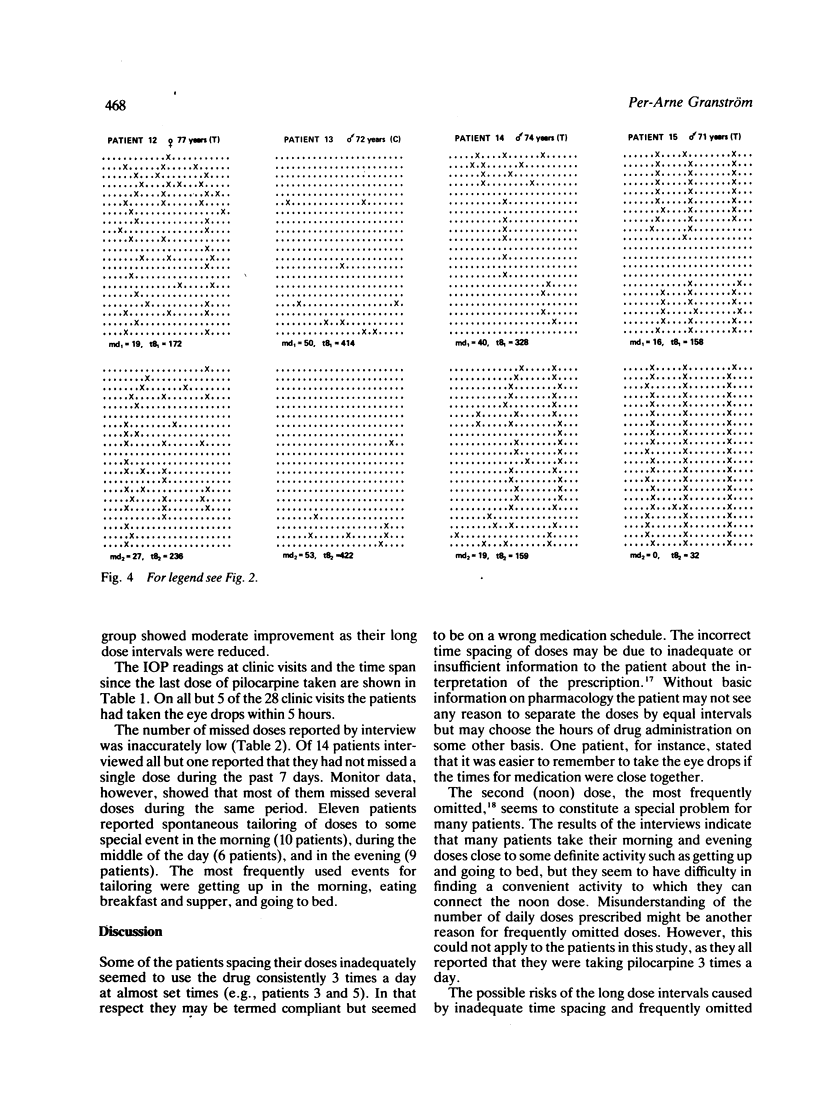
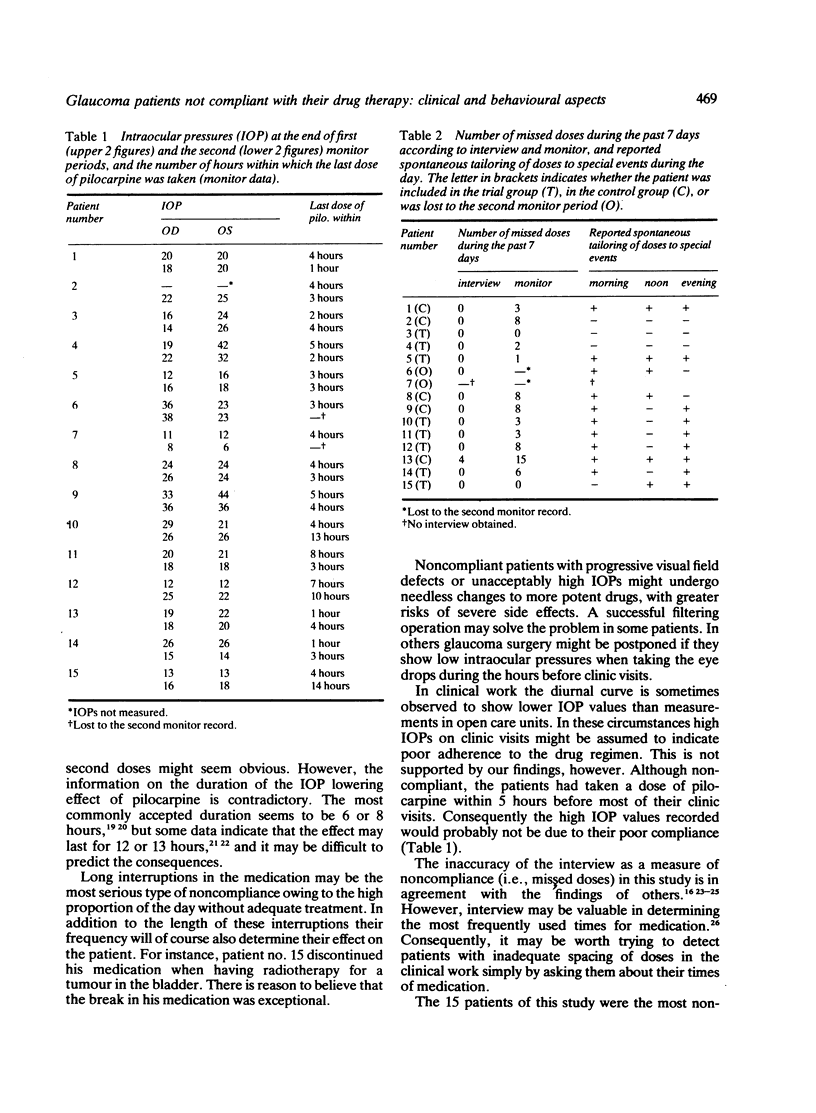
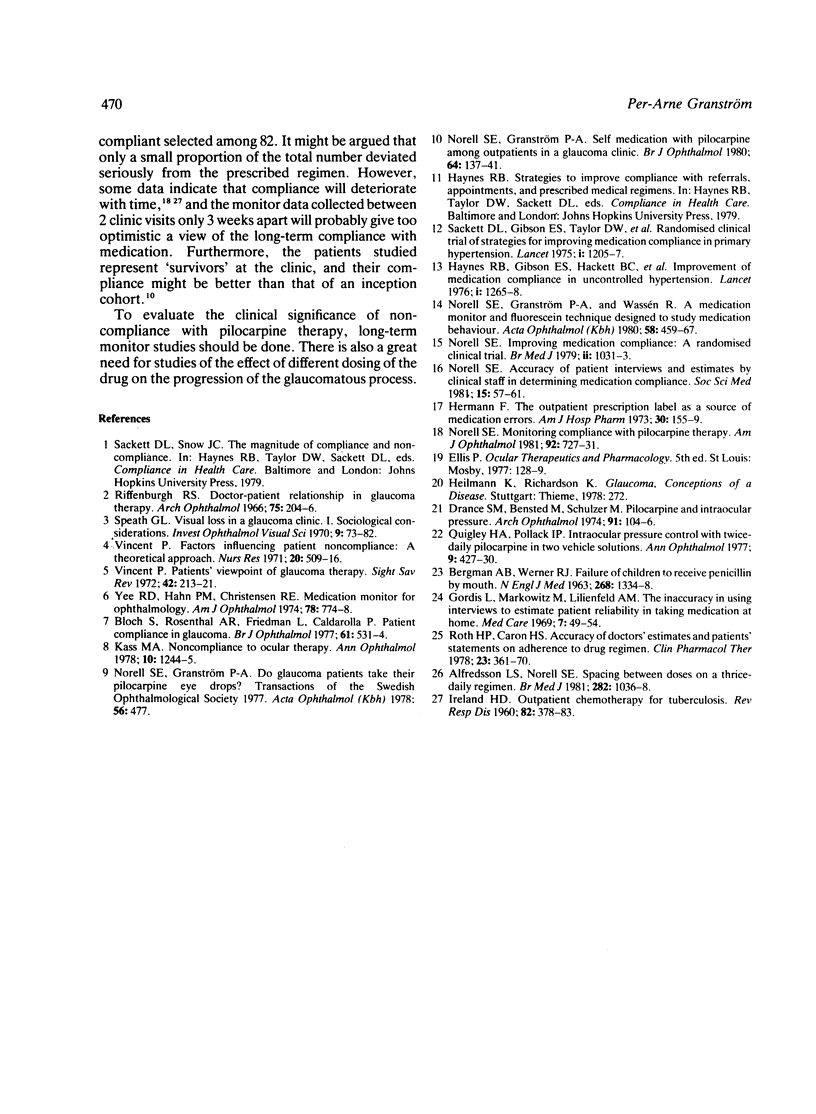
Selected References
These references are in PubMed. This may not be the complete list of references from this article.
- Alfredsson L. S., Norell S. E. Spacing between doses on a thrice-daily regimen. Br Med J (Clin Res Ed) 1981 Mar 28;282(6269):1036–1036. doi: 10.1136/bmj.282.6269.1036. [DOI] [PMC free article] [PubMed] [Google Scholar]
- BERGMAN A. B., WERNER R. J. Failure of children to receive penicillin by mouth. N Engl J Med. 1963 Jun 13;268:1334–1338. doi: 10.1056/NEJM196306132682404. [DOI] [PubMed] [Google Scholar]
- Bloch S., Rosenthal A. R., Friedman L., Caldarolla P. Patient compliance in glaucoma. Br J Ophthalmol. 1977 Aug;61(8):531–534. doi: 10.1136/bjo.61.8.531. [DOI] [PMC free article] [PubMed] [Google Scholar]
- Drance S. M., Bensted M., Schulzer M. Pilocarpine and intraocular pressure. Duration of effectiveness of 4 percent and 8 percent pilocarpine instillation. Arch Ophthalmol. 1974 Feb;91(2):104–106. doi: 10.1001/archopht.1974.03900060110004. [DOI] [PubMed] [Google Scholar]
- Gordis L., Markowitz M., Lilienfeld A. M. The inaccuracy in using interviews to estimate patient reliability in taking medications at home. Med Care. 1969 Jan-Feb;7(1):49–54. doi: 10.1097/00005650-196901000-00006. [DOI] [PubMed] [Google Scholar]
- Haynes R. B., Sackett D. L., Gibson E. S., Taylor D. W., Hackett B. C., Roberts R. S., Johnson A. L. Improvement of medication compliance in uncontrolled hypertension. Lancet. 1976 Jun 12;1(7972):1265–1268. doi: 10.1016/s0140-6736(76)91737-2. [DOI] [PubMed] [Google Scholar]
- Hermann F. The outpatient prescription label as a source of medication errors. Am J Hosp Pharm. 1973 Feb;30(2):155–159. [PubMed] [Google Scholar]
- IRELAND H. D. Outpatient chemotherapy for tuberculosis. Am Rev Respir Dis. 1960 Sep;82:378–383. doi: 10.1164/arrd.1960.82.3.378. [DOI] [PubMed] [Google Scholar]
- Norell S. E. Accuracy of patient interviews and estimates by clinical staff in determining medication compliance. Soc Sci Med E. 1981 Feb;15(1):57–61. doi: 10.1016/0271-5384(81)90063-6. [DOI] [PubMed] [Google Scholar]
- Norell S. E., Granström P. A. Self-medication with pilocarpine among outpatients in a glaucoma clinic. Br J Ophthalmol. 1980 Feb;64(2):137–141. doi: 10.1136/bjo.64.2.137. [DOI] [PMC free article] [PubMed] [Google Scholar]
- Norell S. E., Granström P. A., Wassen R. A medication monitor and fluorescein technique designed to study medication behaviour. Acta Ophthalmol (Copenh) 1980 Jun;58(3):459–467. doi: 10.1111/j.1755-3768.1980.tb05747.x. [DOI] [PubMed] [Google Scholar]
- Norell S. E. Improving medication compliance: a randomised clinical trial. Br Med J. 1979 Oct 27;2(6197):1031–1033. doi: 10.1136/bmj.2.6197.1031. [DOI] [PMC free article] [PubMed] [Google Scholar]
- Norell S. E. Monitoring compliance with pilocarpine therapy. Am J Ophthalmol. 1981 Nov;92(5):727–731. doi: 10.1016/s0002-9394(14)74670-7. [DOI] [PubMed] [Google Scholar]
- Quigley H. A., Pollack I. P. Intraocular pressure control with twice-daily pilocarpine in two vehicle solutions. Ann Ophthalmol. 1977 Apr;9(4):427–430. [PubMed] [Google Scholar]
- Riffenburgh R. S. Doctor-patient relationship in glaucoma therapy. Arch Ophthalmol. 1966 Feb;75(2):204–206. doi: 10.1001/archopht.1966.00970050206011. [DOI] [PubMed] [Google Scholar]
- Roth H. P., Caron H. S. Accuracy of doctors' estimates and patients' statements on adherence to a drug regimen. Clin Pharmacol Ther. 1978 Mar;23(3):361–370. doi: 10.1002/cpt1978233361. [DOI] [PubMed] [Google Scholar]
- Sackett D. L., Haynes R. B., Gibson E. S., Hackett B. C., Taylor D. W., Roberts R. S., Johnson A. L. Randomised clinical trial of strategies for improving medication compliance in primary hypertension. Lancet. 1975 May 31;1(7918):1205–1207. doi: 10.1016/s0140-6736(75)92192-3. [DOI] [PubMed] [Google Scholar]
- Spaeth G. L. Visual loss in a glaucoma clinic. I. Sociological considerations. Invest Ophthalmol. 1970 Jan;9(1):73–82. [PubMed] [Google Scholar]
- Vincent P. A. Patients' viewpoint of glaucoma therapy. Sight Sav Rev. 1972 Winter;42(4):213–221. [PubMed] [Google Scholar]
- Vincent P. Factors influencing patient noncompliance: a theoretical approach. Nurs Res. 1971 Nov-Dec;20(6):509–516. [PubMed] [Google Scholar]
- Yee R. D., Hahn P. M., Christensen R. E. Medication monitor for ophthalmology. Am J Ophthalmol. 1974 Nov;78(5):774–778. doi: 10.1016/0002-9394(74)90299-2. [DOI] [PubMed] [Google Scholar]


